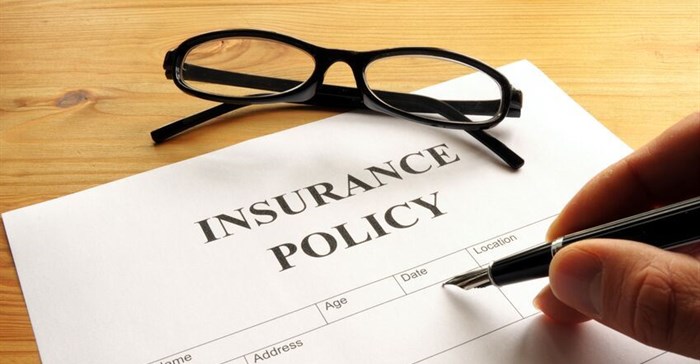
Related


Grant beneficiaries confused by funeral policy deductions
Thembi Siaga and Marecia Damons 28 Aug 2025



Dis-Chem life insurance business set to launch next year
Sfundo Parakozov 28 Oct 2024
Top stories




This is a key theme that emerged overall from the results of the KPMG South Africa annual South African Insurance Industry Survey for 2021.
While the survey indicates that the South African insurance industry has been invaluable to the economy - serving as a shock absorber and allowing many businesses to recover - it also shows that with the fast pace of change in the inter-connected world today, it can place less reliance on past data to predict future outcomes.
“It is time to put a spotlight on the events that we call 1 in 200-year events with a vision of what the future might look like and how this might differ from our limited understanding of historic events,” states Mark Danckwerts, partner: KPMG Africa insurance practice leader.
Despite this Danckwerts says they are very pleased at the results of this year’s survey which indicate that while the insurance sector was hit hard, it was resilient and adaptable.
“The contribution of the insurance industry to the stability and financial soundness of the South African economy demonstrates the capital strength, resilience, and ability of the industry to adapt, innovate and show up when it matters,” he says.
“The knock-on effect and interconnectedness of risks emanating from Covid-19 were astonishing and these impacts as well as their velocity of onset, needs to be considered to obtain a comprehensive understanding of potential implications moving forward,” says Danckwerts.
“Our research shows that all insurers had included Covid-19 in their forecasting by either including stresses or shocks on specific assumptions or updating the budget forecast for the expected impact of the pandemic and applied further considered scenario projections to these updated budget numbers.
“However, moving forward we believe much introspection and re-evaluation by insurers would need to be given to their risk appetites and capacity,” he adds.
An analysis of 21 of the major life insurance licenses in South Africa, covering 88% of the market by total assets, indicated that the top five life insurers grew their asset base by 3.5% with the smaller remaining entities outgrowing their larger counterparts with a 9.3% growth in assets.
Similarly, net premiums reflecting risk and FIDP business for these entities grew by a meagre 2.2%.
The performance of the smaller life insurers saw an overall average growth of around 8%, leading to a slight shift in the share of premium.
Despite this, the top five still generate over 87% of the total premium written by the market.
The life sector witnessed poor premium growth, mediocre investment performance and significant claims and as a result, the industry has moved from a total industry profit of close to R22.1bn in the 2019 period to a loss of R2.6bn in 2020.
The impact was felt not only on provisions, but also on expenses, as businesses moved to remote working, supply chains were disrupted, and premium collections slowed.
“Despite these losses, dividends for the surveyed entities increased from R16.1bn to R18.5bn, with the life insurance industry remaining well capitalised,” continues Danckwerts.
“Moving forward though, there are concerns that once the vaccination rollout has achieved scale, policyholders may decide that life cover is now less of a priority than other basic needs.
“This, coupled with the fact that the next few months hold some challenging moral decisions for life insurers as they debate vaccine mandates for employees, vaccine premium adjustments for policyholders and questions of repricing policies to recoup some of the losses incurred over the recent period, means that there are some tough business decisions that lie ahead,” says Danckwerts.
While the non-life sector experienced lower gross written premiums (GWP) growth when compared to the average of prior years, increases in reinsurance costs, low interest rates, volatile financial markets and significant business interruption claims, some lines of business loss ratios actually improved under the Covid-19 lockdown.
The non-life insurance industry reported GWP of R128bn in 2020, an increase of 5%.
“This indicates that the impact of the pandemic had not been as severe on the industry as expected,” states Danckwerts.
The sector delivered a profit after tax (PAT) figure of R6bn in 2020, representing a 28% decrease from the prior year.
This is largely attributed to numerous challenges the sector experienced including defaults on credit, an increase in net claims of R1.9bn and a claims ratio of 59.5%.
“While there was a decrease in weather-related catastrophes, a reduction in the motor claims ratio was also observed because of lower usage of motor vehicles, working from home, and alcohol bans and curfews.
“However, we saw a much larger increase in business interruption claims, trade and consumer credit insurance was impacted severely and directors’ and officers’ liability insurance claims increased in frequency and severity,” says Danckwerts.
Furthermore, total investment income was down 31.9% due to the interest rate environment and fair value losses, with gross insurance liabilities increasing by 27.2%.
In 2020, the market share of the 10 largest insurers by GWP amounted to 73.8%.
The survey includes 40 non-life insurers, 21 life insurers and seven reinsurers.